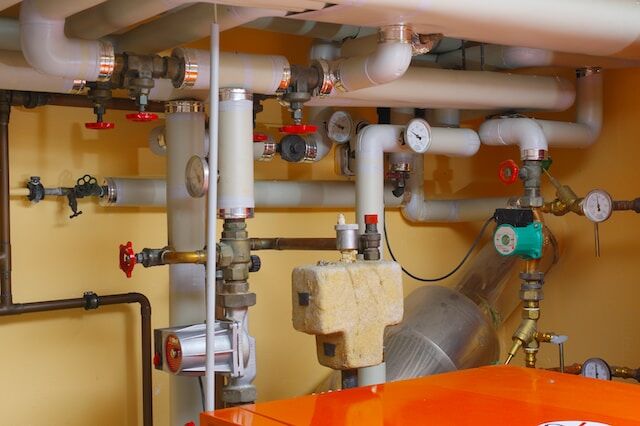Are you interested in tips around Understanding the Basics of Your Home's Plumbing System?

Plumbing is an important element of any type of home, in charge of providing clean water for drinking, food preparation, and bathing, in addition to eliminating wastewater safely. Comprehending the fundamentals of home plumbing is essential for every homeowner to ensure proper upkeep, troubleshooting, and, if essential, repair services. In this newbie's guide, we'll cover the fundamental principles of home plumbing to aid you end up being more knowledgeable about exactly how it works.
Water System
The water system system brings clean water right into your home from a local water source or a private well. It contains a main water line that attaches to your home's plumbing system, normally located underground. A water meter gauges the amount of water eaten, while a shut-off valve permits you to manage the flow of water right into your home.
Plumbing Fixtures
Plumbing components are devices that provide water to various parts of your home and consist of sinks, faucets, commodes, showers, bathtubs, and devices such as dishwashers and cleaning devices. Each component is linked to the water supply system through pipelines and fittings and might have its shut-off valve for maintenance or emergency situations.
Water Heating Unit
The water furnace is accountable for home heating water for domestic use, consisting of bathing, cooking, and cleansing. Common kinds of hot water heater include tank-type water heaters, tankless (on-demand) hot water heater, and heat pump water heaters. The hot water heater is attached to the supply of water system and provides warm water to plumbing fixtures as required.
Drainage System
The drainage system eliminates wastewater from your home and lugs it away to a sewer treatment facility or septic tank. It contains a network of pipelines, fittings, and fixtures that deliver wastewater from plumbing components to the main sewer line or sewage-disposal tank. Appropriate water drainage is essential to avoid obstructions, back-ups, and sewage leaks.
Ventilation System
The ventilation system helps preserve appropriate atmospheric pressure and avoid sewage system gases from entering your home. Air vent pipelines, also called air vent stacks, extend from plumbing fixtures to the roof covering, permitting sewage system gases to get away securely outdoors. Air flow pipelines also allow air to get in the water drainage system, helping with smooth wastewater flow and protecting against suction or vacuum results.
Common Plumbing Devices
Having the right devices handy is necessary for executing fundamental plumbing repairs and maintenance jobs. Common plumbing devices include flexible wrenches, monkey wrench, pliers, pipeline cutters, hacksaws, plungers, augers (or drainpipe snakes), and Teflon tape. Having these tools readily available can assist you tackle minor plumbing issues successfully.
Standard Plumbing Repair Services
While some plumbing repair services may require specialist help, several typical problems can be addressed with standard do it yourself methods. Discovering how to fix a leaky tap, unclog a drain, change a bathroom flapper, or repair a trickling showerhead can save you time and money on plumbing repair services.
Final thought
Understanding the essentials of home plumbing is necessary for every single property owner to preserve a risk-free, practical, and efficient plumbing system. By familiarizing yourself with the water system, plumbing components, drainage system, ventilation system, common plumbing devices, and fundamental repair services, you can with confidence attend to small plumbing issues and guarantee your home's plumbing system operates smoothly.
Understanding Basics of Home Plumbing System: A Beginner's Guide
The Main Components of Your Home Plumbing System
The Water Supply System
This system is responsible for transporting fresh water into your home. It usually has a main water line that splits into two branches: one directed towards cold water services and the other connected to a water heater for hot water. The pressure is key here; it ensures water reaches all parts of your house.
The Drainage System
Once water has been used, it becomes wastewater that needs to be removed from your home. This is where the drainage system comes into play. It includes all the pipes that carry wastewater and sewage away from your house to sewage treatment facilities or septic tanks.
The Vent System
The vent system prevents sewer gases from entering your home and helps maintain the pressure balance that allows wastewater to flow out properly. These vents usually exit through the roof of your house.
Water Heating System
For those who enjoy hot showers or using hot water for cleaning, the water heater is a crucial part of the plumbing system. It can be a tankless system, which heats water on demand, or a traditional water tank model.
Common Plumbing Problems and Basic Troubleshooting
Plumbing systems, while designed to be durable, can face issues like clogged drains, leaky faucets, or low water pressure. Here are some basic troubleshooting tips:
Clogged Drains
Use a plunger or a plumber's snake to try and dislodge whatever is blocking the drain. Regular cleaning can prevent clogs.
Leaky Faucets
Often caused by worn-out washers or gaskets, these can usually be replaced by someone with basic DIY skills.
Low Water Pressure
This might be due to sediment build-up in your fixtures or a leak somewhere in your water line. Cleaning out aerators or seeking a professional to detect leaks might be necessary.
Preventive Maintenance Tips
Maintaining your plumbing system is key to avoiding emergencies. Regularly check for leaks, avoid disposing of grease down the sink, and have your system inspected by a professional plumber at least once a year.

We were shown that article on from someone on a different blog. Sharing is caring. Helping people is fun. Thank you for taking the time to read it.
Book Today!
Comments on “Getting the Essentials of Home Plumbing: A Beginner's Handbook”